Southampton works to restore gravestones
| Published: 07-28-2017 11:48 PM |
SOUTHAMPTON — A tall, sandstone monument stands by the front entrance to Southampton Center Cemetery, dedicated to “brave volunteers of Southampton whose lives were sacrificed in defense of Liberty and Union during the great rebellion.”
A sandstone eagle, missing a wing, keeps watch from atop the structure.
Though the monument withstood the ravages of time, it suffered cracks in the structure that became worse and worse.
That led the town’s Cemetery and Historical commissions to include it in an ongoing restoration effort. The monument was restored in 2015 as part of the Civil War portion of the restoration project, although the bird’s missing wing was never found.
The project continued this summer, as 14 Revolutionary War gravestones and monuments were cleaned and restored with a $7,500 grant from the Massachusetts State Historical Records Advisory Board, matched by Community Preservation Act funds. Eight Civil War gravestones where cleaned and restored in 2015 with a $5,000 grant, matched by CPA funds.
Beyond the Gravestone, a company based in Connecticut, did the work for both projects.
Lisa Cornell, Beyond the Gravestone’s owner, said that what appears to be minor on the outside of gravestones can have structural implications.
“What you see outside is not compared to what’s happening inside,” Cornell said.
Article continues after...
Yesterday's Most Read Articles
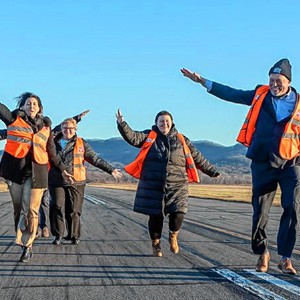 Treehouse, Big Brothers Big Sisters turn race schedule snafu into positive
Treehouse, Big Brothers Big Sisters turn race schedule snafu into positive
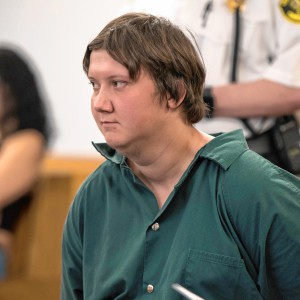 Northampton man will go to trial on first-degree murder charge after plea agreement talks break down
Northampton man will go to trial on first-degree murder charge after plea agreement talks break down
 Area property deed transfers, April 25
Area property deed transfers, April 25
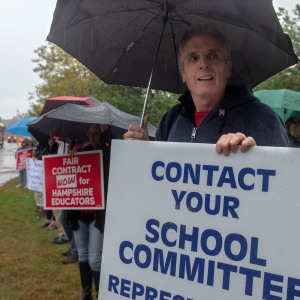 Contentious dispute ends as Hampshire Regional schools, union settle on contract
Contentious dispute ends as Hampshire Regional schools, union settle on contract
 South Hadley’s Lauren Marjanski signs National Letter of Intent to play soccer at Siena College
South Hadley’s Lauren Marjanski signs National Letter of Intent to play soccer at Siena College
 Primo Restaurant & Pizzeria in South Deerfield under new ownership
Primo Restaurant & Pizzeria in South Deerfield under new ownership
For sandstone monuments, cracks in the sedimentary rock will turn to sand, so workers blow out parts that have turned to sand and harden the stone with a consolidator. Layers of the rock are then glued back together with a epoxy.
Acid rain has deteriorated some of the headstones. Cornell said on marble stones, the acid rain will soak between grains of sand and dissolve them. For marble stones, Cornell said the company will place the stones at a slight angle forward to ensure the rain falls on the back of the stone and slows down the deteriorating process.
An anti-fungal treatment is used to remove lichen, mold, algae and fungus.
At the cemetery Friday, veterans’ grave officer Richard Frary talked about the heavy impact the Civil War had on Southampton’s small community. With a population of 1,130 in 1860, 131 Southampton men were drafted to the Civil War. At the Battle of the Wilderness in Virginia, three of those men died.
Frary pointed out the restored headstone for Perry M. Coleman, 10th Massachusetts Infantry, who died in 1862 at the Battle of Fair Oaks in Virginia.
“First to enlist, first to come home,” Frary said.
Before the restoration, there were deep vertical cracks on Coleman’s headstone, according to Robert Kozub, chiarman of the Historical Commission.
“Before, you could put a nickel or dime between them,” Frary added.
As veterans’ grave officer, Frary routinely places granite markers at veteran gravesites that have deteriorated. He said the names are often unreadable. At the May Town Meeting, he received $5,000 in CPA funds to purchase and install markers.
Frary pointed out the first grave in the cemetery. The stone had deteriorated over the years, and the letters are no longer visible. Years ago, Frary added a granite marker to the gravesite for Simeon Wait, who died in 1738.
“Died from drinking too much cold water,” the marker reads.
Although he wasn’t a veteran, Frary said the gravesite is significant to the cemetery, which was registered with the National Register of Historical Places in 2013.
Much of the other graves in the cemetery have likewise deteriorated. Names were erased over time by natural causes. Some have fallen over, cracked or are broken. But when it comes down to fixing them, there isn’t the money to do it, Kozub said, pointing out that the grass was overgrown.
“Some of the stones are so old that the families don’t exist (anymore),” Kozub said.
For the veterans’ gravesites, Kozub said they would like to continue restoring the stones, but it all depends on what grants are available in the coming years.
In any event, the work done will not last forever.
“They are all going to deteriorate again,” Kozub said.
Caitlin Ashworth can be reached at cashworth@gazettenet.com.

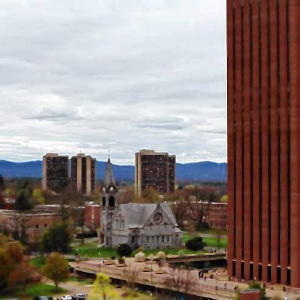 Federal probe targets UMass response to anti-Arab incidents
Federal probe targets UMass response to anti-Arab incidents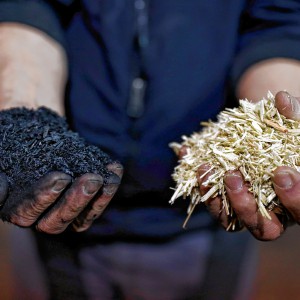 Locking up carbon for good: Easthampton inventor’s CO2 removal system turns biomass into biochar
Locking up carbon for good: Easthampton inventor’s CO2 removal system turns biomass into biochar William Strickland, a longtime civil rights activist, scholar and friend of Malcolm X, has died
William Strickland, a longtime civil rights activist, scholar and friend of Malcolm X, has died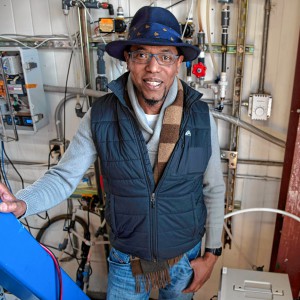 Advancing water treatment: UMass startup Elateq Inc. wins state grant to deploy new technology
Advancing water treatment: UMass startup Elateq Inc. wins state grant to deploy new technology
